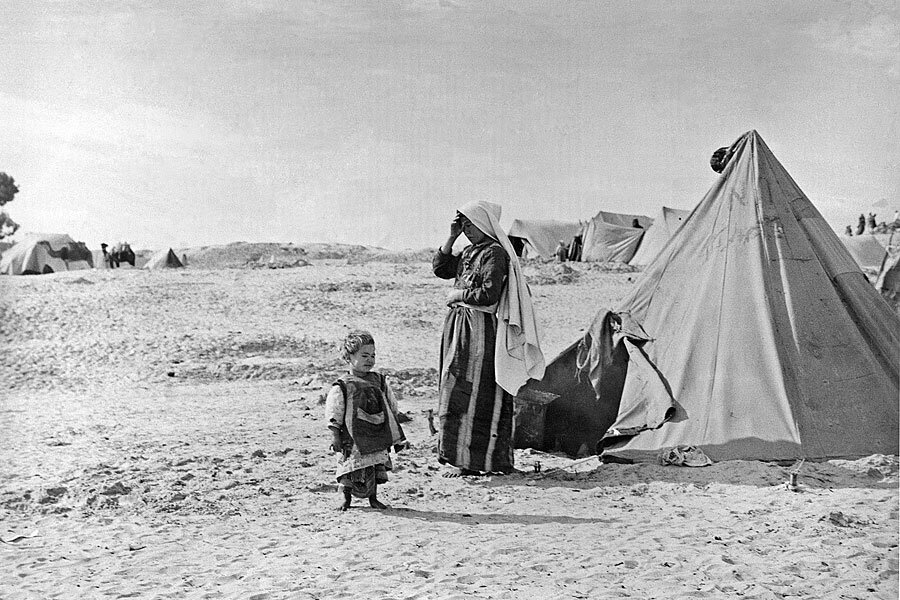iNakba reminds Israelis of Palestinian towns erased from the map
Loading...
| Jerusalem
Every May, Israelis and Palestinians hold warring days of remembrance – one for the day their country was born, the other for the day their nation suffered a nakba, or "catastrophe."
But amid all the waving of the Israeli flags this year, an Israeli NGO has launched a smartphone app to commemorate the more than 400 Palestinian villages depopulated or destroyed in the wake of Israel’s founding.
iNakba puts those villages back on the map, allowing users to upload photos, videos, stories, and other data to paint a picture of the former landscape.
“We believe that maps are a political tool. The map itself destroyed places, erased places,” says Raneen Jeries of Zochrot, which aims to heighten Israeli awareness of the Palestinian nakba. “So what we did is we brought up again the Palestinian maps, the invisible land.”
For fans, the app is a vindication of Palestinian history which has been largely erased from modern-day Israel, where the term nakba is banned in school textbooks and it’s not uncommon for Arabic-language signs to transliterate Hebrew place names of modern Israeli towns rather than use the Arabic designation for the Palestinian villages they replaced.
“The Israeli policy of erasure is now being challenged through social media with a specifically dedicated app,” says Diana Buttu, a Palestinian lawyer who immediately upon downloading the app looked for her father’s village near Nazareth. “This is really powerful that they’re now trying to make these places come back and put them back on the map.”
But Zochrot and its new app have its share of critics, from Israelis who view it as a far-left threat to the Jewish character of the state to Palestinians who see it as meddling in their affairs.
"This is really crazy, that Israelis ... have to teach me about the nakba," says Nizar Hassan, a filmmaker from Nazareth whose 1998 documentary Ostura received acclaim for its portrayal of a Palestinian family forced to leave their home in 1948.
Nor does he buy the argument that Israelis don't already know the history.
"All Israelis know those things," he says. The issue is not whether they know it or not, therefore, but whether they recognize the history, he adds. "And if they don’t recognize it, they have no future in this place.”






